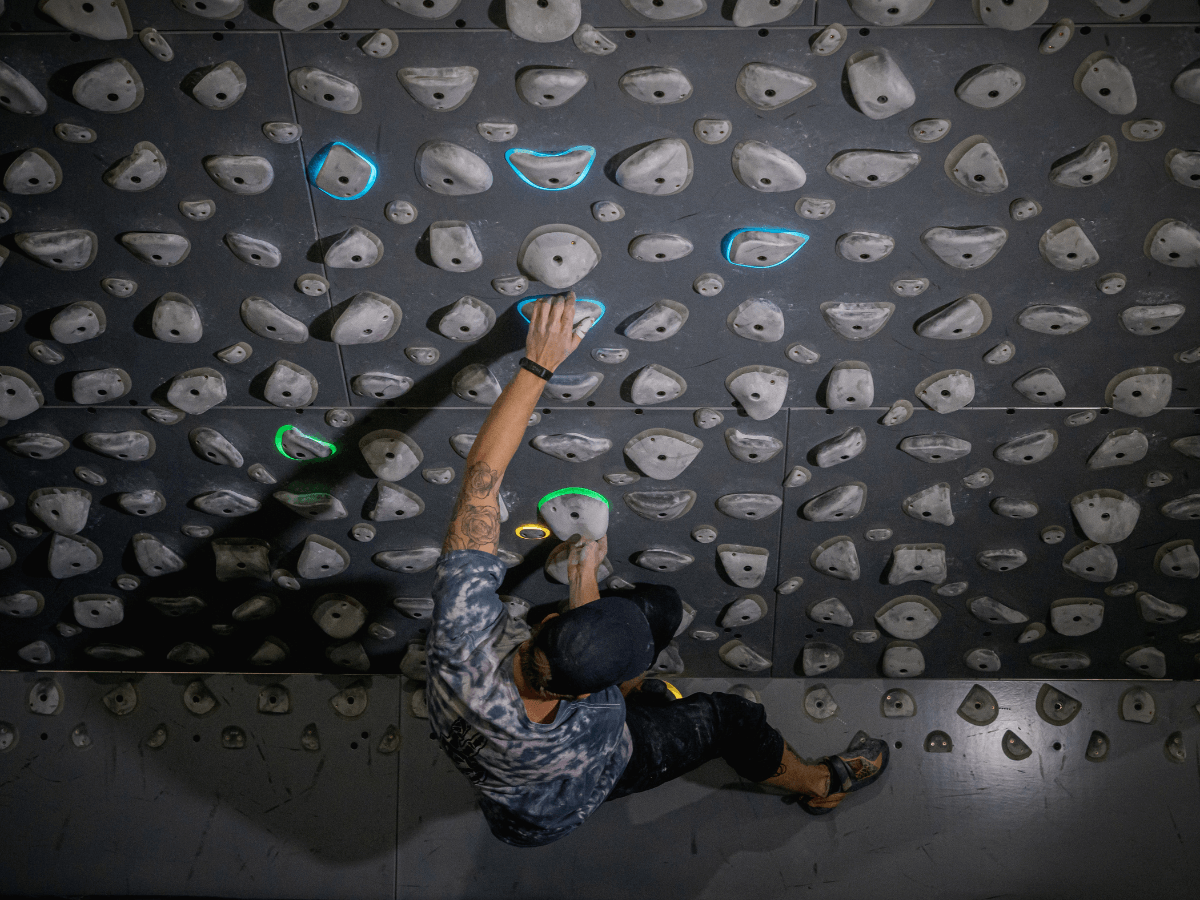What is a Kilter Board?
The Kilter Board is not just another training wall. It's a modern, advanced version of the traditional Woody, designed by climbers for climbers. With its unique features and innovative design, the Kilter Board has been a game-changer in the climbing community since its inception in 2013.
Kilter is a climbing hold company owned by Ian Powell and Jackie Hueftle. They've won the Climbing Business Journal Grips List 6 times and are the official IFSC (International Federation of Sport Climbing) authorized hold brand.
What is a Kilter Board?
A Kilter Board is a training wall constructed in different sizes with an adjustable frame to fit whatever space is available. The frame can adjust the board from 0° (vertical) to 70° overhanging at 5° increments.
The Kilter Board is a versatile training tool. It can be equipped with a custom-made spray wall or their unique light-up app-controlled holds, which open up a world of boulder problems for you to explore. It's available in the Original Layout, designed for climbing gyms, and a Homewall Layout for smaller spaces and home users, giving you the freedom to train wherever you are.
The holds' light-up design makes each boulder problem easy to follow, adding vibrancy to your training program.
Layout Options
The Kilter Board comes in four sizes for its Original and Homewall Layout: 16x12, 12x12, 8x12, and 7x12. The Homewall Layout sizes are 10x12, 10x10, 8x12, and 7x10.
Some of the Homewall Layout sizes don't offer a kickboard, so check the descriptions when choosing one.
Can I Build My Own Kilter Board?
Absolutely! You can build your own Kitler Board at whatever angle you desire. Kilter has multiple fixed and adjustable frame options for each size board, and they'll even give you drilling instructions if you plan to build your own.
If you decide to build a fixed-angle wall, contact Kilter and let them know the grade ranges you're looking for; they'll help you pick an angle for your wall!
Why Train on a Kilter Board?
Besides being visually pleasing, the Kilter Board is the perfect training tool to help you push your limits. Its worldwide database includes boulder problems from anybody willing to create them. You can climb something that somebody across the world set and give your opinion of the climb.
Kilter is known for creating ergonomic holds that support a comfortable climbing experience. Kilter Boards cater to whatever hold type you want to train, from jugs to pinches to crimps to slopers.
Plus, the adjustable board is phenomenal. If a problem is too complex or too easy at a certain angle, you can adjust the wall to make it easier or more difficult.
How to Use a Kilter Board
Start with downloading the app.
Android users: Kilter Board - Apps on Google Play
Apple users: Kilter Board on the App Store (apple.com)
Using the Kilter Board is a breeze. Simply download the app, enable Bluetooth on your device, and follow the instructions to connect to the board. Once connected, you can adjust the wall to your desired angle and select the same angle in the app. It's a straightforward process that ensures you can focus on your climb.
Then, search for problems based on the grade you'd like to climb. You can also set a minimum and maximum grade to avoid getting thrown on something way above your skills.
Each problem shows the number of people who sent it, a star rating, and sometimes, incredibly important, a link to an Instagram video for the beta.
After you've selected the problem you want to try, click the lightbulb icon, and it will light up on the board. Log your sends to keep track of the problems you climb, and give each one a start and difficulty rating.
Kilter Board Rules
The starting holds light up green. If there are two, grab each hold with one hand. If there is only one, then you'll start matching.
The finish holds are purple. You must match the finish hold to send a boulder problem on the Kilter Board correctly.
Between the green and purple holds are yellow and blue ones. The yellow ones are strictly for your feet, while the blue ones are for both hands and feet.
Follow proper etiquette when climbing on a Kilter Board at the gym. If you stumble upon some climbers already using it but want to change the angle, ask nicely and see if they're open to it.
Typical bouldering etiquette applies here, too. Don't hang out in the fall zone; keep your belongings away from potential falls.
The Kilter Board is an excellent training tool. Try it out if you're looking to push your limits!

